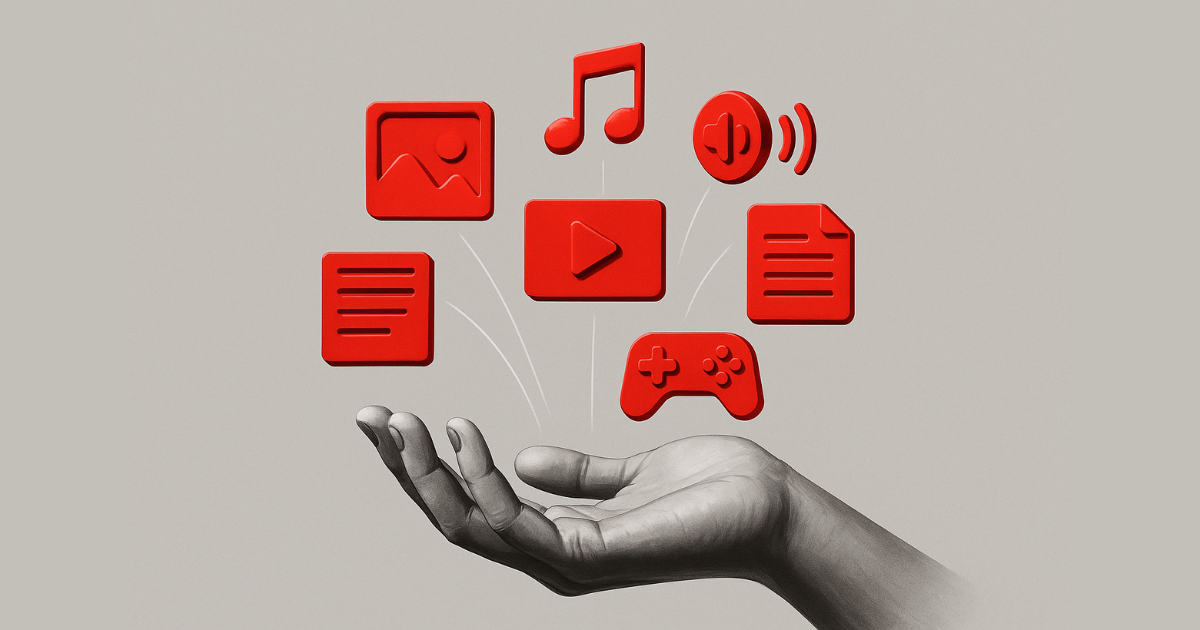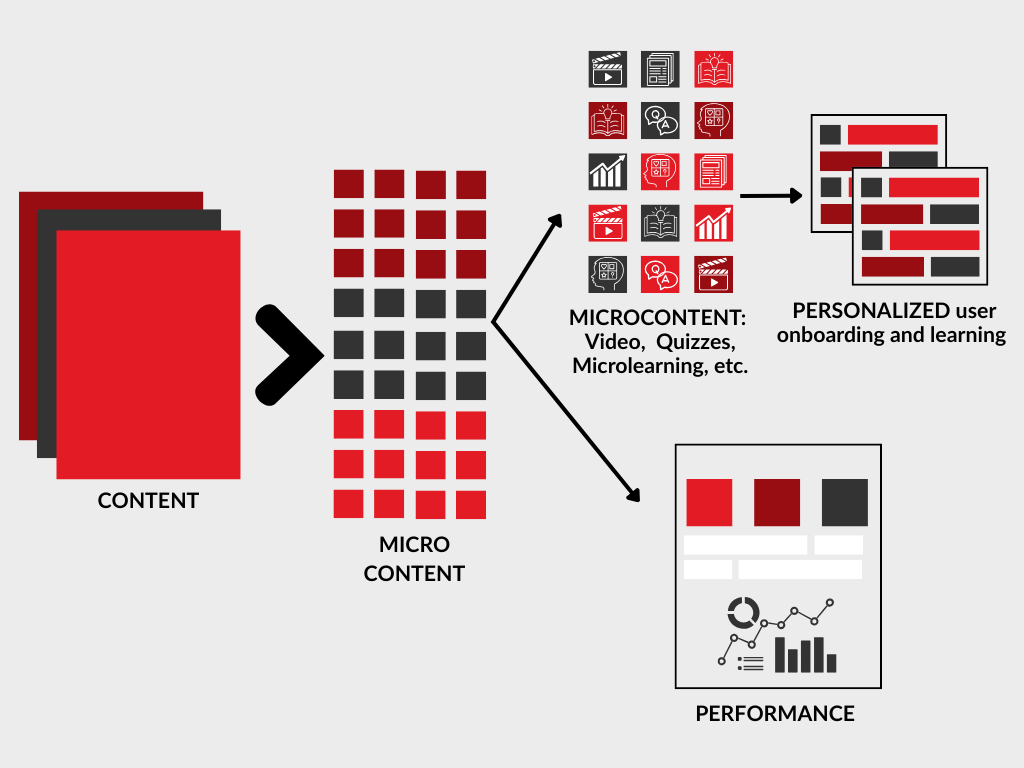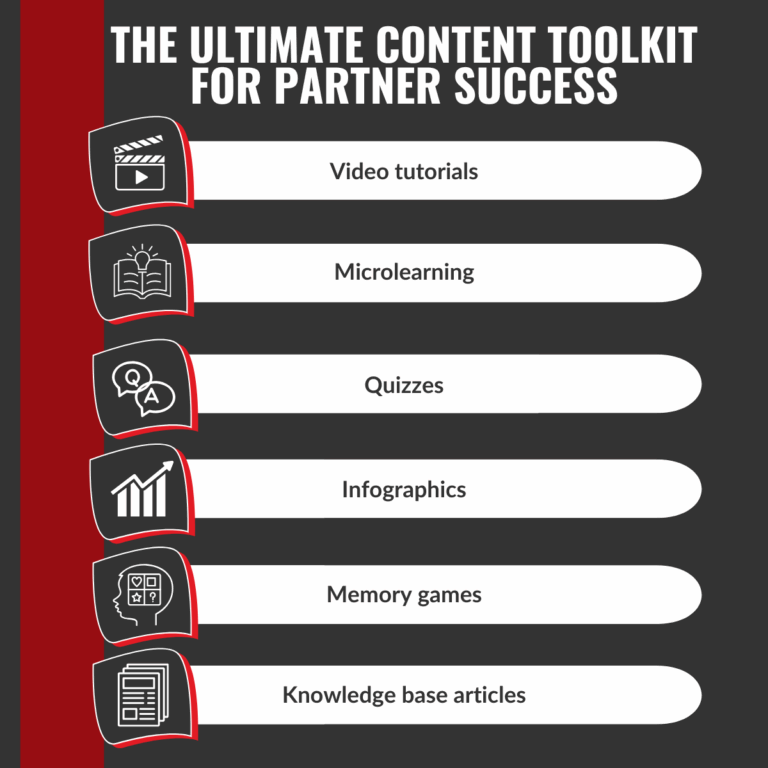
Partners need more than tools, they need the right content
Empowered partners drive growth, but only if they have access to the right content.
When information is scattered or outdated, your partners waste time, miss sales, and lose confidence in your brand. The solution? A content strategy that’s built around their needs, supported by the right tools, and optimized for impact.
This blog uncovers why content (not just technology) is the key to stronger partner engagement, and how you can use modern best practices like content micronization and eLearning to deliver the right message at the right time.
Why is content important for partners?
Partners rely on timely, accurate, and easy-to-access information to do their jobs effectively. But in many organizations, content for partners is scattered across multiple platforms, duplicated in slightly different versions, or locked behind siloed systems that don’t talk to each other.
This fragmented experience makes it difficult for partners to find what they need. They waste time jumping between tools, often miss important updates, and struggle to gain a clear understanding of products, promotions, or procedures. This leads to frustration and confusion and it doesn’t stop there.
The consequences of poor content management for partners are real:
- Inconsistent messaging that weakens brand value
- Reduced productivity and partner engagement
- Miscommunication that can lead to errors or conflict
- Missed sales opportunities and lower revenue
- Risk of losing the partner altogether
Content is more than a resource, it’s a key driver of partner success. When partners have access to clear, consistent, and well-organized content, they can deliver better customer experiences, resolve issues faster, and confidently represent your brand. Good content builds trust, alignment, and performance. Everything you need in a successful partner relationship.
What’s the Real Issue? (Hint: It’s Not Your Platform)
If partners are struggling to find or use content, the instinct might be to blame the platform. But in most cases, the platform isn’t the problem.The real issue lies in how content is structured, governed, and delivered.
Many companies produce a large volume of content, thinking more means better support. But without a clear strategy, this abundance quickly becomes a burden. Disconnected systems, inconsistent formats, and scattered updates make it hard for partners to navigate, trust, or act on the information.
Here’s what often goes wrong:
- Multiple platforms host overlapping or outdated materials
- No unified content structure or consistent naming conventions
- Lack of cross-platform integration or shared analytics
- Poor content governance, no one knows what’s current or correct
- Limited personalization or contextualization for different partner needs
To truly enable partners, content must be holistically managed. That means integrating systems, applying standardized information architecture, optimizing content quality, and using data to refine the experience continuously.
In short, it’s not about having more tools, it’s about making your content work smarter, not harder.
What Is Content Micronization?
Content micronization is the process of breaking down large pieces of content into small, reusable chunks. These micro-units of information can then be mixed, matched, and delivered across various channels and platforms.
This approach makes your content more flexible, personalized, and efficient. Instead of updating an entire document, you can simply update a single snippet. This not only streamlines version control but also makes it easier to curate and recommend the right information at the right time.
Micronized content is easier to scale, quicker to maintain, and much more adaptable. Giving your partners exactly what they need, when and where they need it.

Different Types of Content
Once content is broken down into micro-units, the next step is delivering it in the most effective and engaging way. This is where instructional design and eLearning practices come into play.
By using a mix of interactive and media-rich formats, you can adapt content to fit different partner needs, stages in their journey, and business goals. These formats not only enhance knowledge retention but also help collect valuable data on partner behavior and content performance.

Best practices to deliver the right Information to partners
Delivering valuable content to partners isn’t just about producing more. It’s about being strategic, intentional, and partner-centric. Here’s how to make sure your content truly empowers your partners:
Start with strategy: Put your partner at the center
Step into your partner’s shoes. What do they need to succeed? What content helps them become confident advocates for your brand? Build your content strategy around their journey, pain points, and goals.
Audit and optimize existing content
Review what you already have. Is it up-to-date, accurate, and aligned with current messaging? Micronize valuable assets, remove outdated ones, and ensure consistency across channels.
Identify content gaps
Create new content by identifying what’s missing. Are partners unclear on product features? Do they struggle with onboarding or troubleshooting? Filling these gaps helps build a complete, useful knowledge base.
Choose technology that supports the strategy
Technology should serve the strategy, not the other way around. Select tools that are flexible, integrative, and scalable. The right setup supports seamless content delivery, smart versioning, and cross-platform consistency.
Track, measure, and improve
Use analytics to understand how partners engage with your content. What do they use most? Where do they drop off? These insights help you fine-tune content for greater impact and engagement.
When you align your content with your partner’s needs and back it with the right systems, you turn information into a powerful tool for trust, loyalty, and performance.
Conclusion
Empowering your partners starts with delivering the right content: clearly, consistently, and at the right time. Throughout this blog, we explored the real challenges behind disconnected platforms, the power of content micronization, the variety of formats that truly engage, and best practices to create a partner-centric strategy backed by smart technology.
To make this happen at scale, you need the right tools. That’s why we created Sales Tune, a platform built with partners in mind. From centralized content management to personalized delivery, Sales Tune helps you simplify complexity and create meaningful partner experiences that drive results.
Want to take the next step?
📥 Download our free Content Guide to get practical tips and examples.
🔍 Learn more about Sales Tune and how it supports partner success.
📩 Contact us today to discover how our solution can fit your unique needs.











